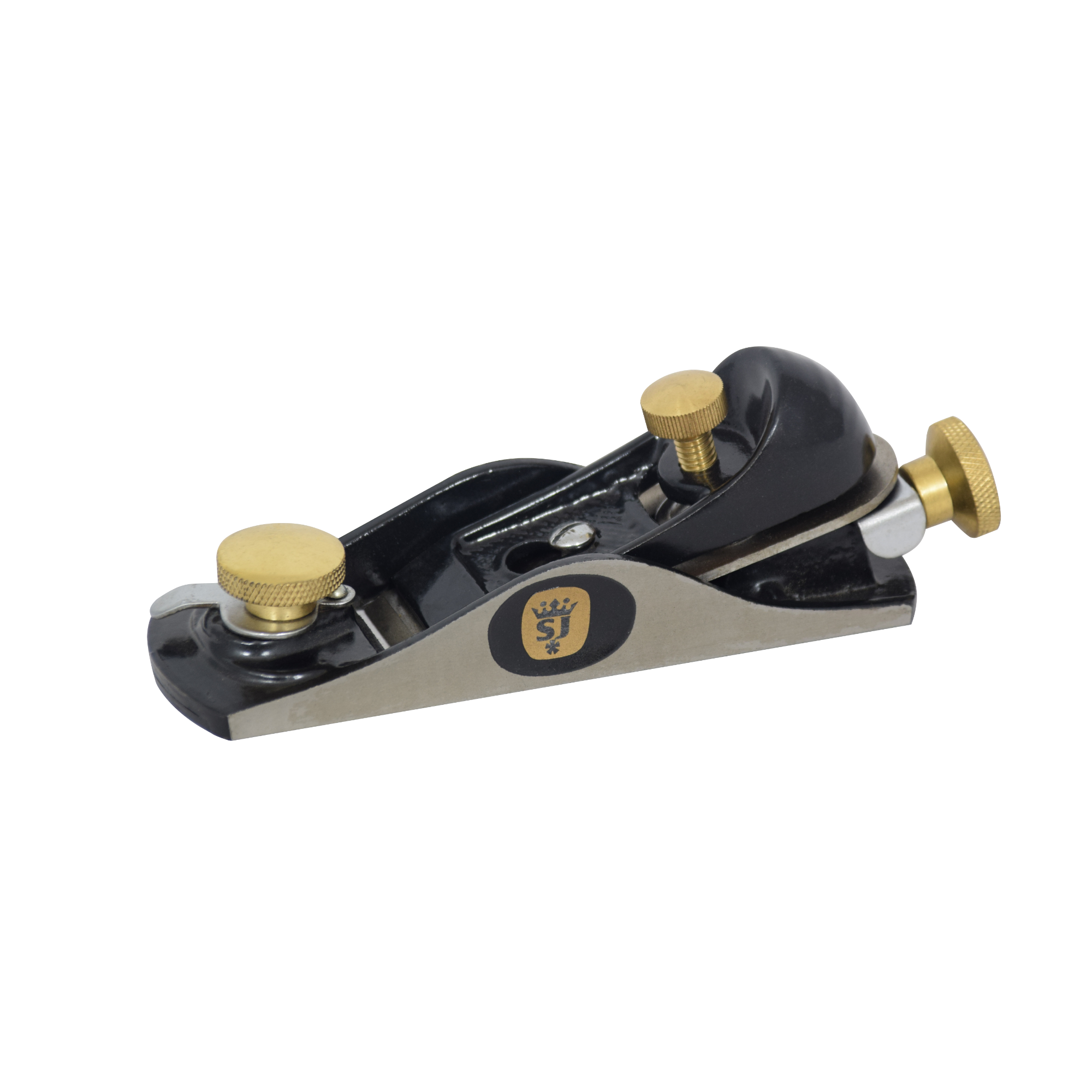Description
THIS PRODUCT: Base Length: 157mm, Base Width & Depth: 44 x 28mm, 42mm Wide Low Angle Cutter & Fully Adjustable Mouth. Ideal for End Grain Work & Single Handed Operation, – Classically Designed With Brass Fittings, These Tools Hark Back to the Days of Traditional Craftsmanship & Woodwork. – Ductile Cast Iron Painted Gloss Black with Ground Sides & Bottom, – Blade Retaining Block: Ductile Cast Iron Painted Gloss Black, – High Carbon Steel Blade.
IN GENERAL: A block plane is a hand tool used in woodworking for fine shaping, smoothing, and trimming wood surfaces. It is characterized by its compact size and a blade set at a low angle to the sole (bottom) of the plane. Block planes are versatile and are valued for their ability to create smooth and precise finishes on wood. Here’s a brief description of a block plane and some common uses:
Description:
- Blade and Cutting Angle: The blade of a block plane is typically made of high-carbon steel and is set at a low angle, usually around 20 to 25 degrees relative to the sole of the plane. This low cutting angle allows the plane to slice through wood fibers cleanly, resulting in a smooth finish.
- Sole and Body: The sole of a block plane is flat and may be made of metal or wood. The body of the plane is compact and designed to be held with one hand. The front part of the plane is often referred to as the “nose,” and it may be adjustable for depth of cut.
- Adjustable Mouth: Many block planes feature an adjustable mouth, which allows woodworkers to control the size of the opening where the blade protrudes. A narrower mouth opening is suitable for fine shavings and smoothing, while a wider opening is used for more aggressive material removal.
- Blade Adjustment Mechanism: Block planes typically have a blade adjustment mechanism that allows the user to extend or retract the blade for depth control. Some block planes have a lateral adjustment feature for aligning the blade parallel to the sole.
Common Uses:
- Smoothing Wood Surfaces: Block planes are used for smoothing and refining the surface of wooden boards, removing imperfections, and creating a glass-smooth finish.
- Chamfering Edges: Woodworkers use block planes to create chamfers or beveled edges on wood pieces, adding decorative touches to furniture and moldings.
- Trimming End Grain: Block planes are effective for trimming the end grain of boards to achieve a clean and flush surface.
- Removing Sharp Edges: They are used to round over or soften sharp edges and corners on woodwork, reducing the risk of splinters and making pieces more comfortable to handle.
- Shaping Wood: Block planes can be employed to shape wooden components, such as rounding edges and curves on workpieces.
- Fitment and Joinery: Woodworkers use block planes to fine-tune the fit of joinery components, ensuring that joints like tenons and mortises fit together snugly.
- Door and Window Fitting: Carpenters use block planes to adjust the fit of doors and windows within their frames, ensuring smooth operation and proper clearance.
- Touch-Up and Adjustments: Block planes are handy for making minor adjustments, shaving down uneven surfaces, or correcting small errors in woodworking projects.
Block planes are considered essential tools in woodworking shops due to their versatility and ability to produce precise results. They are particularly useful for achieving a high level of surface quality and are often used in conjunction with other hand and power tools to complete woodworking projects. Proper sharpening and maintenance of the blade are important for ensuring the effectiveness of a block plane.


